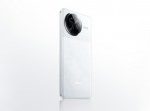- Insider Intelligence publishes thousands of research reports, charts, and forecasts on the Connectivity & Tech industry. You can learn more about becoming a client here.
- Below is some pertinent information on the Internet of Things.
BusinessInsider
You’ve likely heard the phrase “Internet of Things” — or IoT — at some point, but you might also be scratching your head figuring out what it is or what it means.
What is the Internet of Things?
The Internet of Things, commonly abbreviated as IoT, refers to the connection of devices (other than typical fare such as computers and smartphones) to the Internet. Cars, kitchen appliances, and even heart monitors can all be connected through the IoT. And as the Internet of Things grows in the next few years, more devices will join that list.
We’ve compiled a beginner’s guide of IoT terms and questions to help you navigate the increasingly connected world.
What is an Internet of Things device?
Any stand-alone internet-connected device that can be monitored and/or controlled from a remote location is considered an IoT device. With more smaller, more powerful chips, almost all products can be an Internet of Things devices.
What is the Internet of Things ecosystem?
All the components that enable businesses, governments, and consumers to connect to their IoT devices, including remotes, dashboards, networks, gateways, analytics, data storage, and security is part of the Internet of Things ecosystem.
Other Internet of Things Terms & Definitions:
- Entity: Includes businesses, governments, and consumers.
- Physical layer: The hardware that makes an IoT device, including sensors and networking gear.
- Network layer: Responsible for transmitting the data collected by the physical layer to different devices.
- Application layer: This includes the protocols and interfaces that devices use to identify and communicate with each other.
- Remotes: Enable entities that utilize IoT devices to connect with and control them using a dashboard, such as a mobile application. They include smartphones, tablets, PCs, smartwatches, connected TVs, and nontraditional remotes.
- Dashboard: Displays information about the IoT ecosystem to users and enables them to control their IoT ecosystem. It is generally housed on a remote.
- Analytics: Software systems that analyze the data generated by IoT devices. The analysis can be used for a variety of scenarios, such as predictive maintenance.
- Data storage: Where data from IoT devices is stored.
- Networks: The internet communication layer that enables the entity to communicate with their device, and sometimes enables devices to communicate with each other.
IoT Predictions, Trends, and Market
Insider Intelligence forecasts that there will be more than 64 billion IoT devices installed around the world by 2026. Additionally, companies and consumers will spend nearly $15 trillion on IoT devices, solutions, and supporting systems from 2018 through 2026.
Connected to the internet and equipped with sensors, these devices power much of the developing data-based economy and bridge the divide between the physical and digital worlds.
What are the industries affected by IoT?
While we can expect IoT to affect every industry one way or another, there are several environments within the three groups of consumers, governments, and ecosystems will benefit the greatest from the IoT. These include:
- Manufacturing
- Transportation
- Defense
- Agriculture
- Infrastructure
- Retail
- Logistics
- Banks
- Oil, gas, and mining
- Insurance
- Connected Homes & Smart Buildings
- Food Services
- Utilities
- Hospitality & Healthcare
- Smart Cities
What are the major IoT Companies?
There are literally hundreds of companies linked to the Internet of Things, and the list should only expand in the coming years. Here are some of the major players that have stood out in the IoT to this point:
- Intel (INTC)
- Ericsson (ERIC)
- Microsoft (MSFT)
- Amazon (AMZN)
- Google (GOOGL)
- IBM (IBM)
- Cisco (CSCO)
- Verizon (VZ)
- AT&T (T)
- GE (GE)
- Fitbit (FIT)
- Garmin (GRMN)
- Honeywell (HON)
- BlackRock (BLK)
What are IoT Platforms?
One IoT device connects to another to transmit information using Internet transfer protocols. IoT platforms serve as the bridge between the devices’ sensors and the data networks.
The following are some of the top IoT platforms on the market today:
- Amazon Web Services
- Microsoft Azure
- ThingWorx IoT Platform
- IBM’s Watson
- Cisco IoT Cloud Connect
- Salesforce IoT Cloud
- Oracle Integrated Cloud
- GE Predix
IoT Security & Privacy
As devices become more connected thanks to the IoT, security and privacy have become the primary concern among consumers and businesses — but it’s not slowing IoT adoption.
However as more connected devices pop up around the globe, cyber attacks are also a growing threat. Hackers could penetrate connected cars, critical infrastructure, and even people’s homes. As a result, several tech companies are focusing on cyber security in order to secure the privacy and safety of all this data.
More to Learn
The Internet of Things (IoT) is powering transformation for enterprises, consumers, and governments. Emerging tools and technologies like smart speakers, machine learning, and 5G are enabling huge gains to efficiency and more control at home and in the workplace.
The continued growth of the IoT industry is going to be a transformative force across all organizations. By integrating all of our modern day devices with internet connectivity, the IoT market is on pace to grow to over $3 trillion annually by 2026.
Interested in learning more? Join other Insider Intelligence clients who receive thousands of Banking forecasts, briefings, charts, and research reports to their inboxes. >> Become a Client
Powered by WPeMatico






